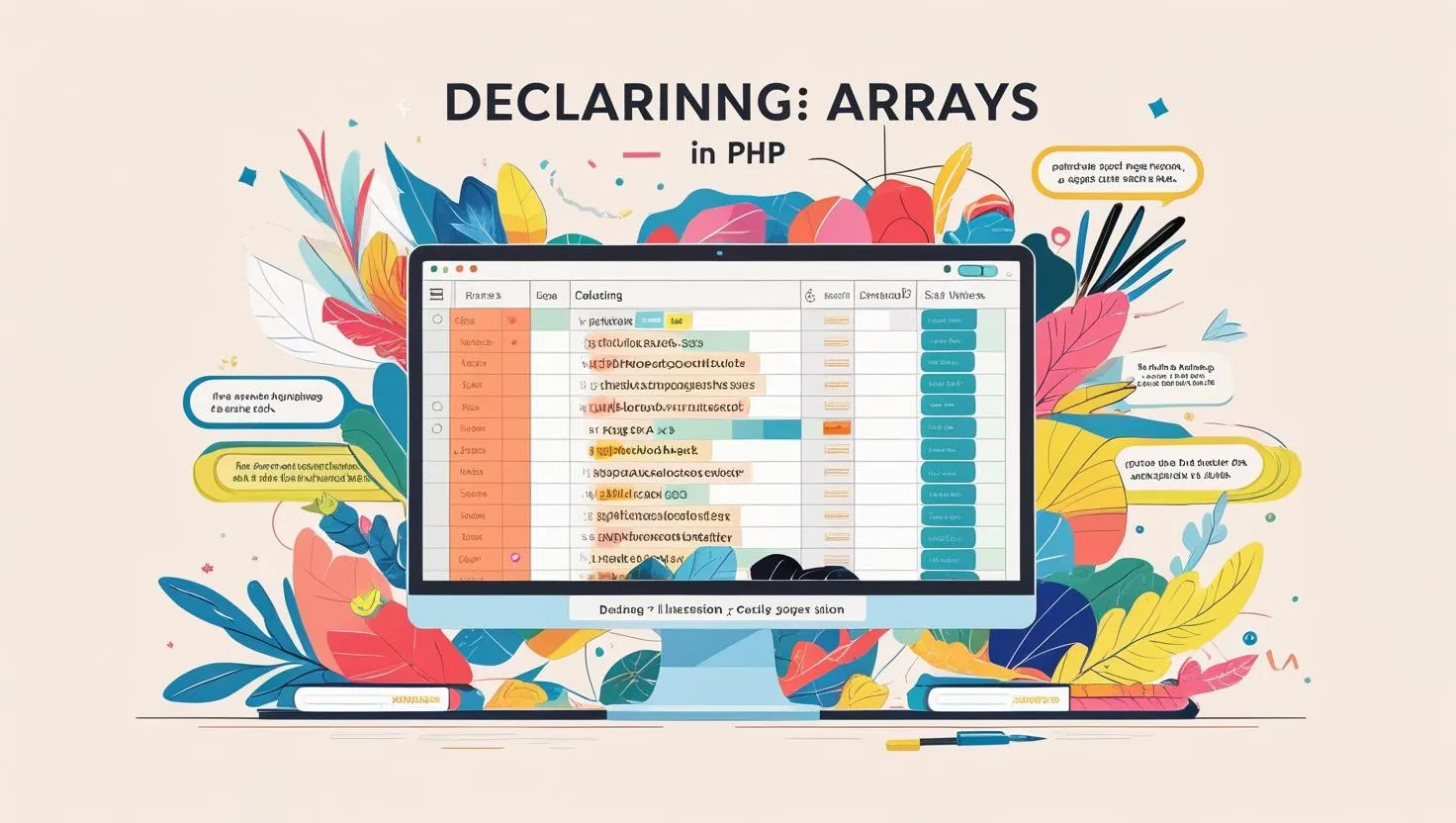How to Declare Array in PHP, Is Array PHP? Essential Guide Unveiled

Hello PHP enthusiasts! I’m Somen, a seasoned PHP developer with a huge passion for helping beginners make sense of the wonderful world of PHP. Today, we’re diving into an essential and exciting part of PHP programming: arrays. Whether you’re just starting your journey or brushing up your skills, you’ll discover everything you need to know about how to declare array in PHP, is array PHP?, and some handy practical pointers you can use right away. Let’s unlock this topic together!
What This Is About: Understanding Arrays in PHP
Before we can work wonders with code, let’s answer a simple question: what exactly is an array? Imagine you have several labeled boxes (variables), each holding a different item (value). Managing many such boxes individually gets tough. Enter arrays—they’re like a special box with individual compartments, each storing its own item, but all within the same container!
In PHP, an array is a data structure that allows you to store multiple values in a single variable. So rather than having one box for apples, one for oranges, and another for bananas, you’ve got a fruit box (array) containing all your fruits together, easy to manage and sort. Arrays are vital in real-world coding—think of shopping lists, user data, cart items, and more.
Common Use Cases
- Storing lists (like names or user emails)
- Mapping values (e.g., product ID to price)
- Grouping related data for quick access
Why PHP Developers Should Care About Arrays
So, is array PHP, and why should you even care? The answer is a big YES—arrays are one of PHP’s most powerful features and core to web development. They’re used in nearly every dynamic site, from simple blogs to complex shopping platforms.
Understanding arrays is not just about knowing syntax; it’s about being able to write clean, scalable, and efficient PHP code. Mastering arrays equips you for handling user data, working with databases, and building features that delight users. Trust me, embracing arrays from the start will make your journey as a developer much smoother and more fun!
| Concept | With Individual Variables | With Arrays |
|---|---|---|
| Storing Data |
|
|
How to Declare Array in PHP: Syntax and Examples
Alright, let’s roll up our sleeves and see how to declare array in PHP step by step. The syntax is friendly and flexible! You can use the classic array() function or the short [] (square brackets) notation introduced in PHP 5.4 and above.
Indexed Arrays
Indexed arrays use numeric keys (starting from 0) to store their values. This is just like listing fruits in order.
<?php
// Classic way
$fruits = array("Apple", "Banana", "Cherry");
// Modern way
$fruits = ["Apple", "Banana", "Cherry"];
?>The values are accessed by their numeric index:
<?php
echo $fruits[0]; // Outputs: Apple
echo $fruits[1]; // Outputs: Banana
?>Associative Arrays
Associative arrays use named keys (like labels), making your data even clearer. Imagine mapping each fruit to a color:
<?php
$fruitColors = array(
"Apple" => "Red",
"Banana" => "Yellow",
"Cherry" => "Red"
);
// Or using short syntax
$fruitColors = [
"Apple" => "Red",
"Banana" => "Yellow",
"Cherry" => "Red"
];
?>Now, you access the value by name:
<?php
echo $fruitColors["Banana"]; // Outputs: Yellow
?>Multidimensional Arrays
Arrays within arrays! These are perfect for complex data like a table of users, products, or scores.
<?php
$users = [
["name" => "Alice", "age" => 25],
["name" => "Bob", "age" => 28],
["name" => "Eve", "age" => 22]
];
echo $users[1]["name"]; // Outputs: Bob
?>Tips for Using Arrays (for Beginners and Experts)
- Use
print_r($array)orvar_dump($array)to visualize arrays while debugging - Always check your PHP version; short array syntax
[]requires PHP 5.4+ - For dynamic lists, try out helpful PHP array functions like
array_push()andcount() - Combine both indexed and associative arrays for flexible data structures
Conclusion
And there you have it! We’ve uncovered the core concepts behind how to declare array in PHP, answered the big question “is array PHP?”, and walked through practical examples that will boost your coding skills. Arrays are truly the backbone of PHP data management, letting you store, access, and organize lots of data efficiently. As you keep practicing these concepts, you’ll find that arrays open up countless possibilities for your programming projects!
Ready to keep learning and level up your blog and coding journey? Dive deeper and check out more hands-on tutorials at MATSEOTOOLS. Happy coding!
Written by Somen from MATSEOTOOLS
 Some Question
Some Question


